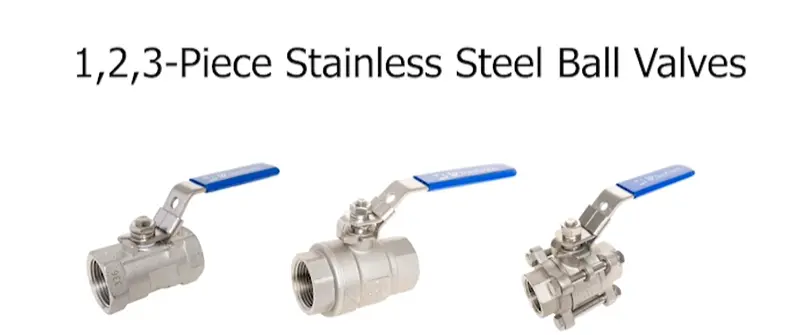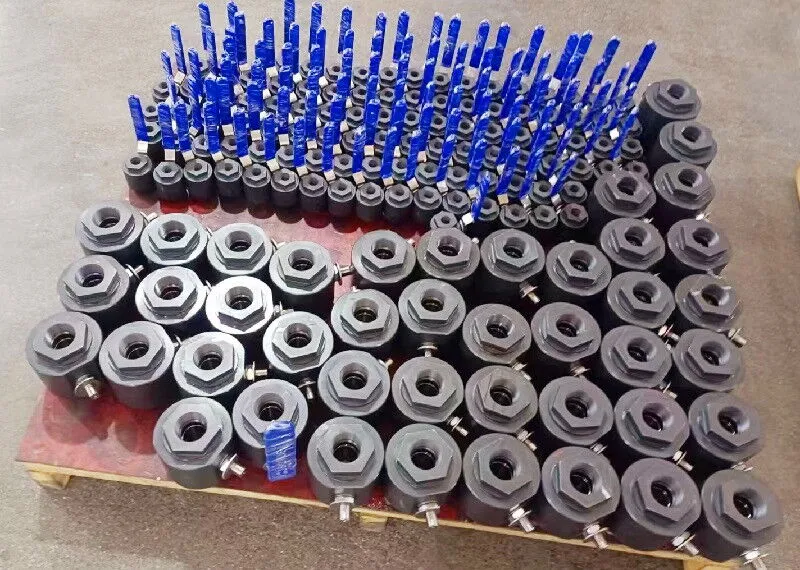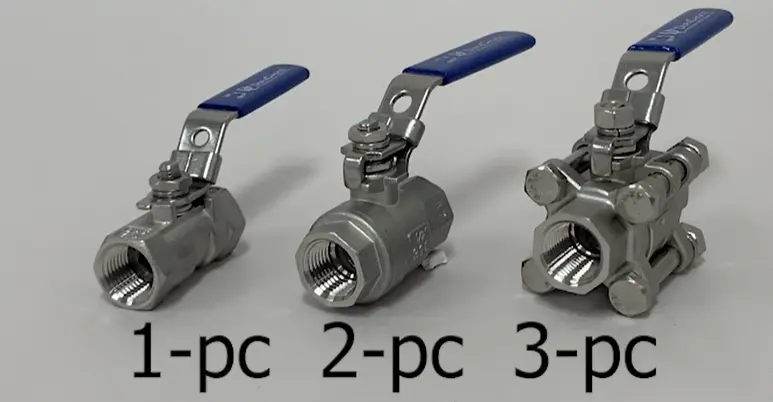
Ball valves, chosen for their dependability and longevity, offer fluid or gas media on/off control. Numerous commercial and industrial processing systems use ball valves, and there are product variants that can be used in nearly any situation. The amount of components that comprise the valve body design varies in several of these variations, impacting both the initial cost and maintenance capacity.
A one-piece ball valve has two apertures on a single, solid body, threads for a screw-in connection, and an actuator or manual handle for actuation. One-piece ball valves are known as "throwaway valves" because they are not meant to be fixed; instead, they must be replaced as they corrode or become broken. Because there aren't many leakage opportunities, they are lightweight, dependable, affordable, and compact.
Generally speaking, one-piece ball valves are only available in reduced port sizes, which are smaller than the pipe size. In situations where flow velocity is a crucial factor, one-piece ball valves might not be the ideal option.
Two-piece ball valves consist of a lever and a main body with a single threaded end connection. They also come in bigger port sizes and with a bolt and flange connection arrangement.
Similar to one-piece ball valves, two-piece ball valves are not meant to be fixed since removing them once they are screwed in may result in galling on the threads, or wear from adhesion. In addition, the NPT connection is made to be screwed in only once and torqued correctly to form a metal-to-metal seal inside the valve body. This seal is broken when this connection is unscrewed, hence it is not advised.
Two-piece ball valves are available in complete port versions for applications where flow rate is crucial and offer bidirectional flow shutdown. Compact, dependable, and cost-effective, they are a little more costly to replace than one-piece ball valves. A three-piece ball valve is made up of two pipe connectors, one at each port, and a main body. Since the connectors are usually flanged, welded, or threaded to a pipe, only the valve body needs to be removed for maintenance and cleaning. It is simple to replace the ball, ball seat, stem, and seals, as well as any other metal or elastomeric parts.
Ball valves with three pieces are more expensive initially than ones with fewer components, but they are frequently the more economical choice over time. The parts are much less expensive to replace than the valve itself, and they can continue to function for their whole intended lifespan—and occasionally longer. Additionally, production can continue as needed because the connectors' ability to stay in place during maintenance avoids a line shutdown.
Three-piece ball valves are preferred for applications requiring frequent maintenance and come in full port and standard port variants.
The most widely utilized ball valve types in all industries where on/off fluid control is necessary are one- and two-piece models. It would take pages to explain all the uses, but typical examples include processing facilities in the food, automotive, chemical, pharmaceutical, and agricultural sectors.
Both one-piece and two-piece ball valves are suitable for many applications, but they shouldn't be used in high-cycle or high-pressure systems that need regular maintenance. Although it is feasible, trying to fix and reinstall a two-piece ball valve is not advised. One-piece ball valves are not made to be repaired.
The 3-piece ball valve is the most resilient of these product types when properly cared for. For high-cycle, high-pressure applications that endure a lot of wear and tear, the three-piece ball valve is perfect. Most significantly, 3-piece ball valves allow parts to be removed for maintenance or cleaning, often with the valve body still in place. This implies that readily worn elastomeric parts, such as seals, can be replaced or altered in response to aging or shifting system conditions.
There are several connection types for three-piece ball valves, such as socket weld, tube socket weld, and Female National Pipe Taper (FNPT). The following features are unique to Gemini Valve's 3-piece ball valves:
- Bolts for the assembly that can be screwed straight into the flanges
- Reduced possibility of assembly nuts being dropped or misplaced during valve installation or maintenance
- Two-piece pipe adapters that make alignment more simpler by enabling flanges to spin separately from pipe connectors
- Quick and accurate alignment to the valve center section
- Design of a self-wear compensating stem seal to provide extended, leak-proof service
| 1-Piece Ball Valves | 2-Piece Ball Valves | 3-Piece Ball Valves | |
| Benefits |
|
|
|
| Drawbacks |
|
|
|
You must choose a ball valve by considering the particular usage requirements. A single-piece ball valve might be a good option if you have a limited budget and low operating conditions, like in a home water system; if you require a slightly more complicated medium-pressure situation and require periodic maintenance, a two-piece ball valve might be a better option; and if you work in an environment that requires frequent cleaning, high pressure, or high temperature, like the chemical or pharmaceutical industry, the design and functionality of a three-piece ball valve.
In summary, knowing how these ball valves differ from one another will enable you to select the appropriate option for various situations. I hope you can make use of this knowledge!


